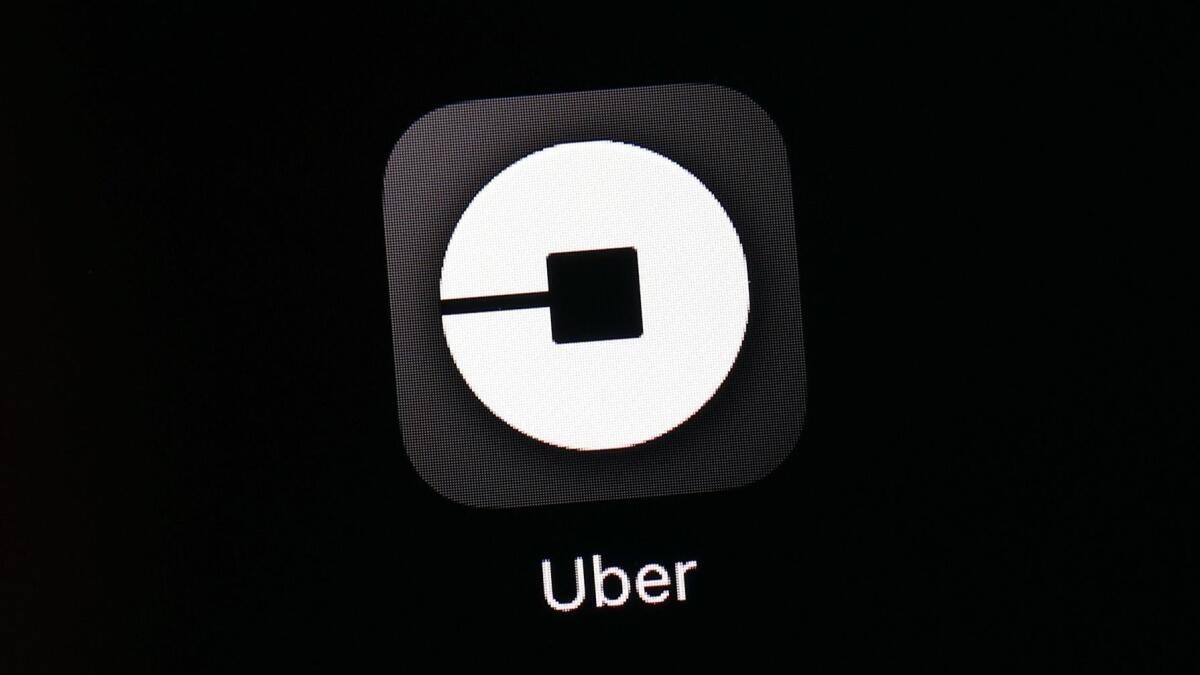Uber posts a profit, sort of, and dissolves its Arizona self-driving presence

- Share via
Uber Technologies Inc., after years of historic losses, is laughing to itself this quarter. It turned a $2.5-billion profit during the first three months of this year — technically.
Separately, the ride-hailing giant said it is permanently shutting down self-driving testing in Arizona as federal authorities investigate a fatal collision with a pedestrian in Tempe, Ariz. — one of the first deaths from a self-driving car. It had already halted tests nationwide in the aftermath of the March crash, but it hopes to resume testing this summer in Pittsburgh, which is home to the San Francisco company’s engineering offices.
Uber recorded a quarterly profit on paper, after accounting for the value of selling its Southeast Asian business to Grab and its Russian business to Yandex. But it’s a different story without those windfalls. Uber had a loss of $312 million before interest, taxes and other expenses in the quarter, cutting those losses in half compared with the first three months of 2017, according to financials provided by Uber. That’s a marked improvement for a company that has burned through more than $10 billion.
Still, Uber doesn’t expect those losses to go away. Even though Chief Executive Dara Khosrowshahi preached responsibility when he took over in September, he has grown convinced that Uber needs to invest in new areas of growth, spending on food delivery, autonomous vehicle research and electric bikes. Uber is taking a page from Amazon’s book: Money-making businesses such as ride-hailing can fund promising but decidedly unprofitable ones such as designing flying cars.
“Cars are to us what books are to Amazon,” Khosrowshahi said at a Goldman Sachs conference in February.
The company reported that net revenue, after accounting for payments to drivers, grew 70% year-over-year to $2.6 billion. But gross bookings, the total value of the fares drivers bring in, grew only 55% to $11.3 billion. That means Uber is taking more of the total bookings for itself, suggesting that a smaller portion of the pie is going to drivers.
Uber also announced Wednesday that investment firms Coatue Management, Altimeter and TPG plan to buy between $400 million and $600 million in Uber stock from existing shareholders. The deal values Uber at $62 billion. The transaction is meant to allow Uber employees to sell some shares if they want to. Uber is aiming for a public offering next year. If it doesn’t have that IPO, some of its investors could be free to sell their shares on the private market.
“We are off to a terrific start in 2018,” Khosrowshahi said in a statement, saying that the growth of Uber’s rides business was exceeding internal expectations. “Given the size of the opportunity ahead of us and our goal of making Uber a true mobility platform, we plan to reinvest any over-performance even more aggressively this year, both in our core business as well as in big bets like Uber Eats globally.”
Uber is a private company, and so is not required to disclose performance metrics, but after years of leaked financials it has begun disclosing the numbers to reporters. For the second time, Uber has made retroactive adjustments to its financials — though the effect of those changes is relatively minor, based on documents provided by the company.
Uber is still searching for a chief financial officer after talks with VMware Inc.’s Zane Rowe stalled, a person familiar with the matter said. The company has several empty board seats and is looking for a chair.
According to the release, Uber has $6.3 billion in cash, not including a $1.5-billion term loan that Uber inked in March. Uber valued the paper gain from selling its Russian and Southeast Asian businesses in exchange for stock in local companies at $2.9 billion.
Going forward, Uber is focused on India and the Middle East, where it faces local competitors. Executives insist that its days of selling its overseas businesses to local rivals are over, and the company is doubling down in those markets. Meanwhile, Didi Chuxing, the Chinese company that Uber sold its business to in 2016, is now competing with Uber directly in Mexico and has quietly entered Uber-dominated Australia.
Meanwhile, Uber — which had already halted autonomous vehicle testing nationally as the National Transportation Safety Board investigates the March crash that killed a pedestrian — said Wednesday that regardless of the inquiry’s result, it does not plan to return to Arizona for self-driving tests.
After the accident, Arizona Gov. Doug Ducey ordered Uber to stop operating on the state’s roads indefinitely, calling the incident “an unquestionable failure.” It was a prompt about-face for a governor who has embraced experimental autonomous vehicle testing in his state.
Uber hopes to resume testing in Pittsburgh this summer. The company has said that in the near term it wants to keep its autonomous testing near its engineering offices to help avoid future incidents. Its self-driving group is based in its Pittsburgh. Axios first reported Uber’s plans to dismantle its self-driving testing operations in Arizona.
“We’re committed to self-driving technology, and we look forward to returning to public roads in the near future,” an Uber spokeswoman said in a statement. “In the meantime, we remain focused on our top-to-bottom safety review, having brought on former NTSB Chair Christopher Hart to advise us on our overall safety culture.”
Newcomer writes for Bloomberg.
More to Read
Inside the business of entertainment
The Wide Shot brings you news, analysis and insights on everything from streaming wars to production — and what it all means for the future.
You may occasionally receive promotional content from the Los Angeles Times.










